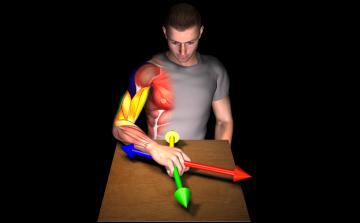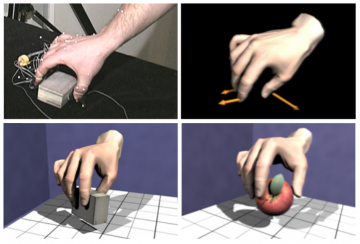GazeBot: a biologically motivated eye-head robot
The eye movement system of animals is an exemplary sensorimotor system, with a wealth of neurophysiological data. Many descriptive models have been developed to explain this data. To better understand the functional significance of the control architecture used in animals […]
Synergies and Modularity in Human Sensorimotor Control
Human motor skills are remarkably complex because they require coordinating many muscles acting on many joints. A widely held, but controversial, hypothesis in neuroscience is that the nervous system simplifies learning and control using a modular architecture, based on modules called synergies. Previous evidence for modularity had been indirect, based on statistical regularities in the […]
Interaction Capture and Synthesis
Controlling contact between the hand and physical objects is a major challenge for computer animation, virtual reality, and sensorimotor neuroscience. The compliance with which the hand makes contact also reveals important aspects of the movement’s purpose. We present a […]


